|
upm
1.7.1
Sensor/Actuator repository for libmraa (v2.0.0)
|
|
upm
1.7.1
Sensor/Actuator repository for libmraa (v2.0.0)
|
API for the NRF24L01 Transceiver Module. More...
id This module defines the NRF24L01 interface for libnrf24l01
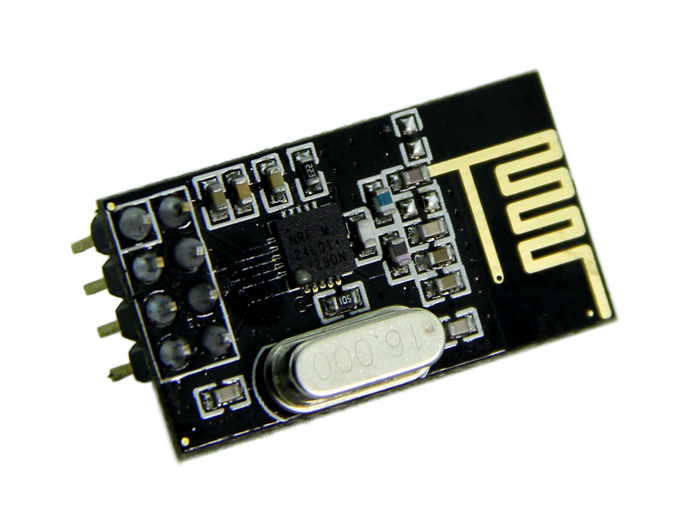
Public Member Functions | |
| NRF24L01 (int cs, int ce) | |
| std::string | name () |
| void | init (int chipSelect, int chipEnable) |
| void | configure () |
| void | send (uint8_t *value) |
| void | send () |
| void | setSourceAddress (uint8_t *addr) |
| void | setDestinationAddress (uint8_t *addr) |
| void | setBroadcastAddress (uint8_t *addr) |
| void | setPayload (uint8_t load) |
| void | setDataReceivedHandler (Callback *call_obj) |
| bool | dataReady () |
| bool | dataSending () |
| void | getData (uint8_t *data) |
| uint8_t | getStatus () |
| bool | rxFifoEmpty () |
| void | rxPowerUp () |
| void | rxFlushBuffer () |
| void | txPowerUp () |
| void | powerDown () |
| void | setChannel (uint8_t channel) |
| void | setPower (power_t power) |
| uint8_t | setSpeedRate (speed_rate_t rate) |
| void | txFlushBuffer () |
| void | pollListener () |
| mraa::Result | ceHigh () |
| mraa::Result | ceLow () |
| mraa::Result | csOn () |
| mraa::Result | csOff () |
| void | setBeaconingMode () |
| void | sendBeaconingMsg (uint8_t *msg) |
Data Fields | |
| uint8_t | m_rxBuffer [MAX_BUFFER] |
| uint8_t | m_txBuffer [MAX_BUFFER] |
| uint8_t | m_bleBuffer [32] |
| NRF24L01 | ( | int | cs, |
| int | ce | ||
| ) |
Instantiates an NRF24l01 object
| cs | Chip select pin |

|
inline |
Returns the name of the component
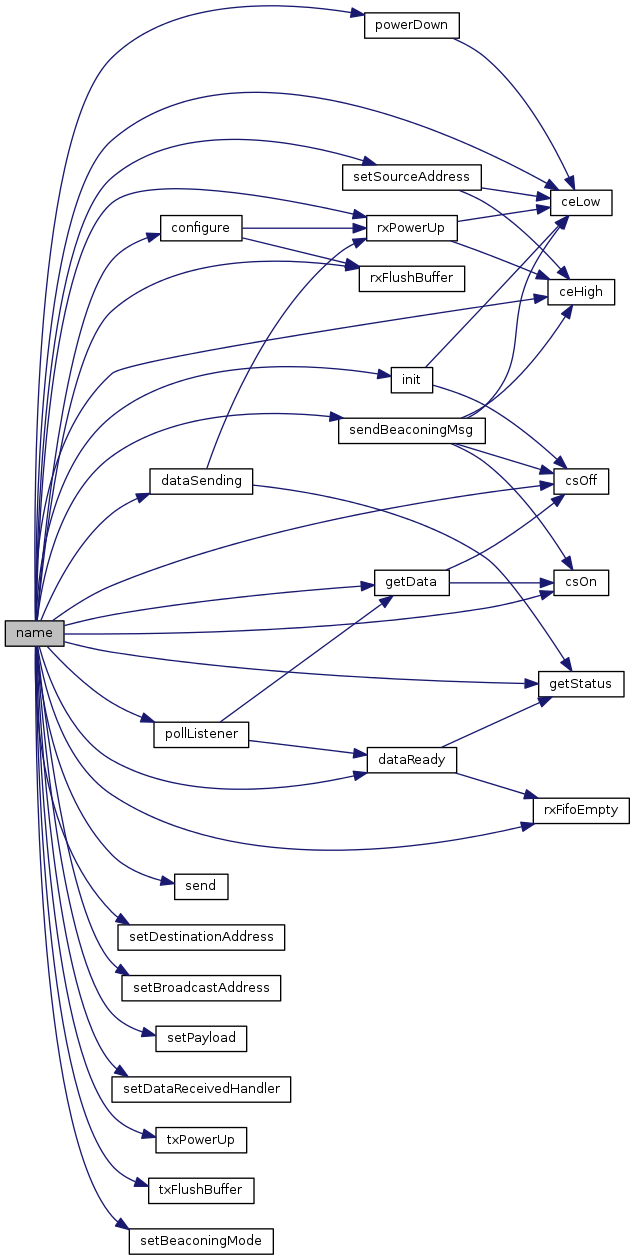
| void init | ( | int | chipSelect, |
| int | chipEnable | ||
| ) |
Initializes needed GPIO pins and SPI
| chipSelect | Sets up the chip select pin |
| chipEnable | Sets up the chip enable pin |


| void configure | ( | ) |
Configures the NRF24L01 transceiver


| void send | ( | uint8_t * | value | ) |
Sends the buffer data
| value | Pointer to the buffer |
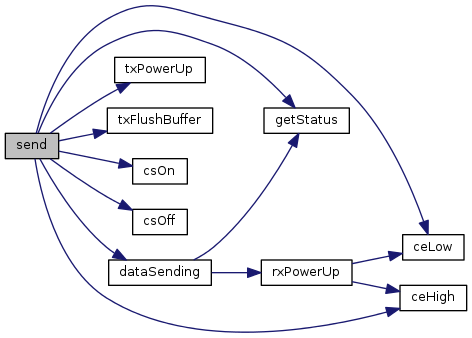
| void send | ( | ) |
Sends the data located in an inner bufer; the user must fill the m_txBuffer buffer

| void setSourceAddress | ( | uint8_t * | addr | ) |
Sets a receiving address of the device
| addr | 5-byte address |


| void setDestinationAddress | ( | uint8_t * | addr | ) |
Sets a recipient address. The nrfSend method sends the data buffer to this address
| addr | 5-byte address |

| void setBroadcastAddress | ( | uint8_t * | addr | ) |
Sets a broadcasting address
| addr | 5-byte address |

| void setPayload | ( | uint8_t | load | ) |
Sets the payload size
| load | Size of the payload (MAX 32) |

| void setDataReceivedHandler | ( | Callback * | call_obj | ) |
Sets the handler to be called when data has been received
| call_obj | Object used for callback - Java |

| bool dataReady | ( | ) |
Checks if the data has arrived


| bool dataSending | ( | ) |
Checks if the transceiver is in the sending mode


| void getData | ( | uint8_t * | data | ) |
Sinks all the arrived data into a provided buffer
| data | Pointer to the buffer |


| uint8_t getStatus | ( | void | ) |
Checks the transceiver state
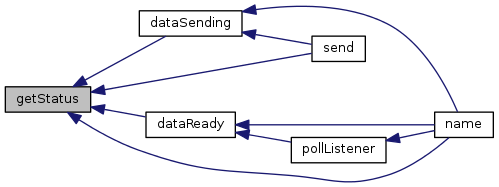
| bool rxFifoEmpty | ( | ) |
Checks if the receive stack is empty

| void rxPowerUp | ( | ) |
Powers the receiver up

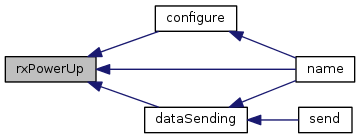
| void rxFlushBuffer | ( | ) |
Flushes the receive stack

| void txPowerUp | ( | ) |
Powers the transmitter up

| void powerDown | ( | ) |
Powers everything down


| void txFlushBuffer | ( | ) |
Flushes the transmit stack

| void pollListener | ( | ) |
Pulling the method listening for the arrived data, dataRecievedHandler is triggered if data arrives


| mraa::Result ceHigh | ( | ) |
Sets the chip enable pin to HIGH

| mraa::Result ceLow | ( | ) |
Sets the chip enable pin to LOW
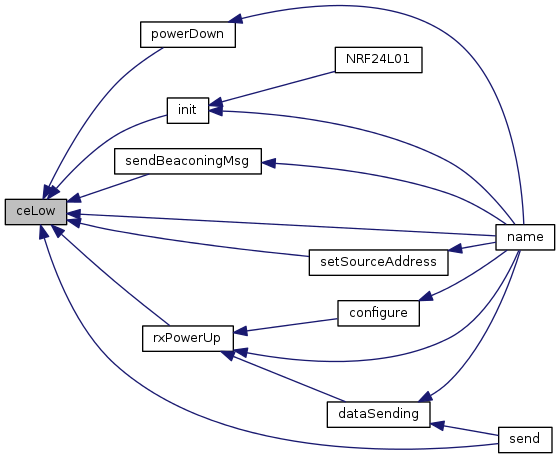
| mraa::Result csOn | ( | ) |
Sets the chip select pin to LOW
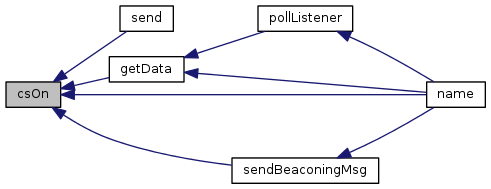
| mraa::Result csOff | ( | ) |
Sets the chip select pin to HIGH
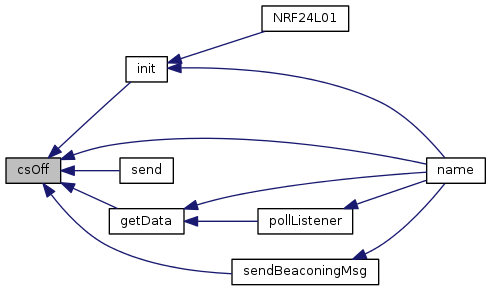
| void setBeaconingMode | ( | ) |
Configures the NRF24L01 transceiver to behave as a BLE (Bluetooth Low Energy) beaconing devcie.

| void sendBeaconingMsg | ( | uint8_t * | msg | ) |
Beacons the provided message to BLE scanners.
| msg | Beacons the provided message (max length is 16 bytes) |
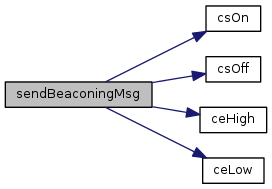

| uint8_t m_rxBuffer[MAX_BUFFER] |
Receive buffer
| uint8_t m_txBuffer[MAX_BUFFER] |
Transmit buffer
| uint8_t m_bleBuffer[32] |
BLE buffer
 1.8.11
1.8.11